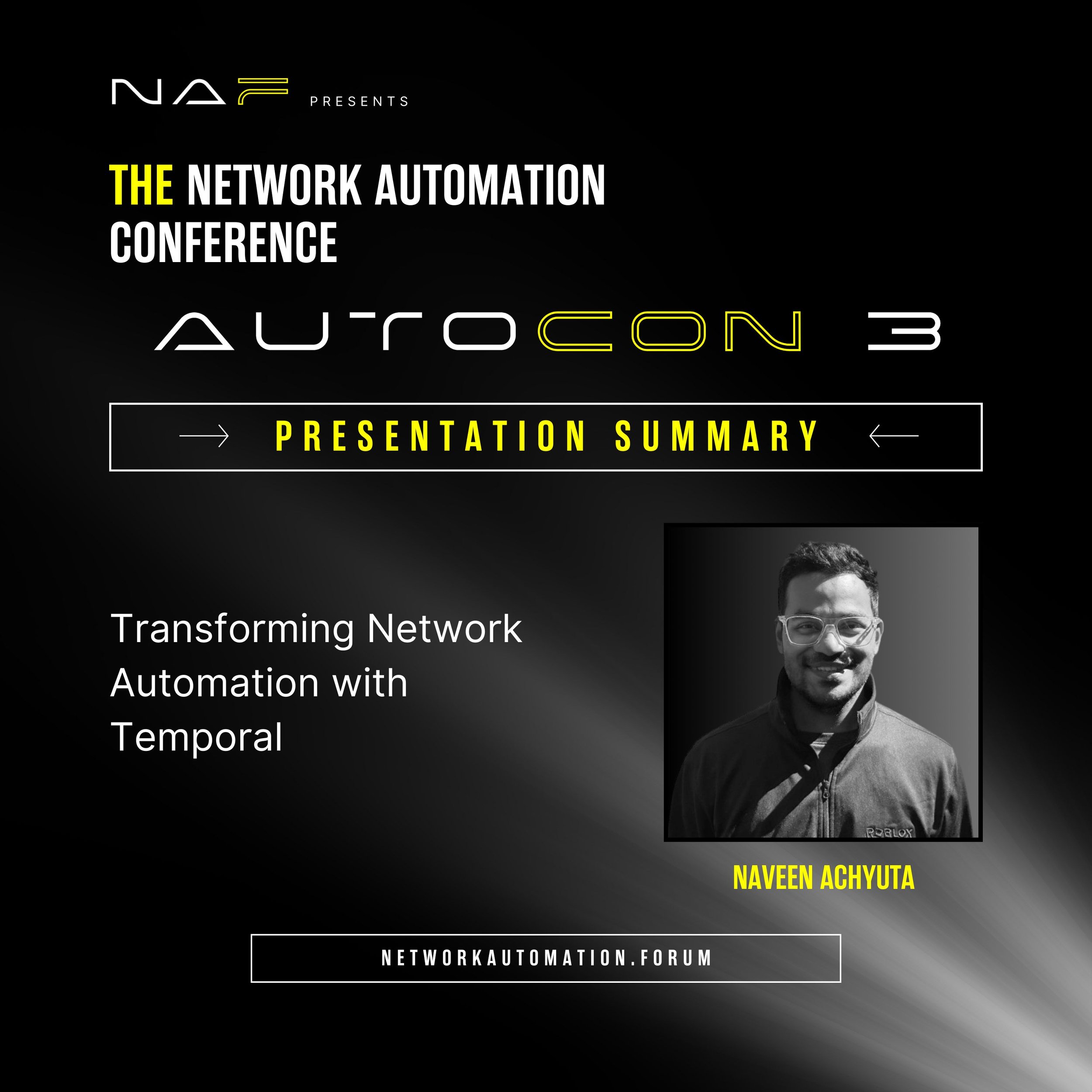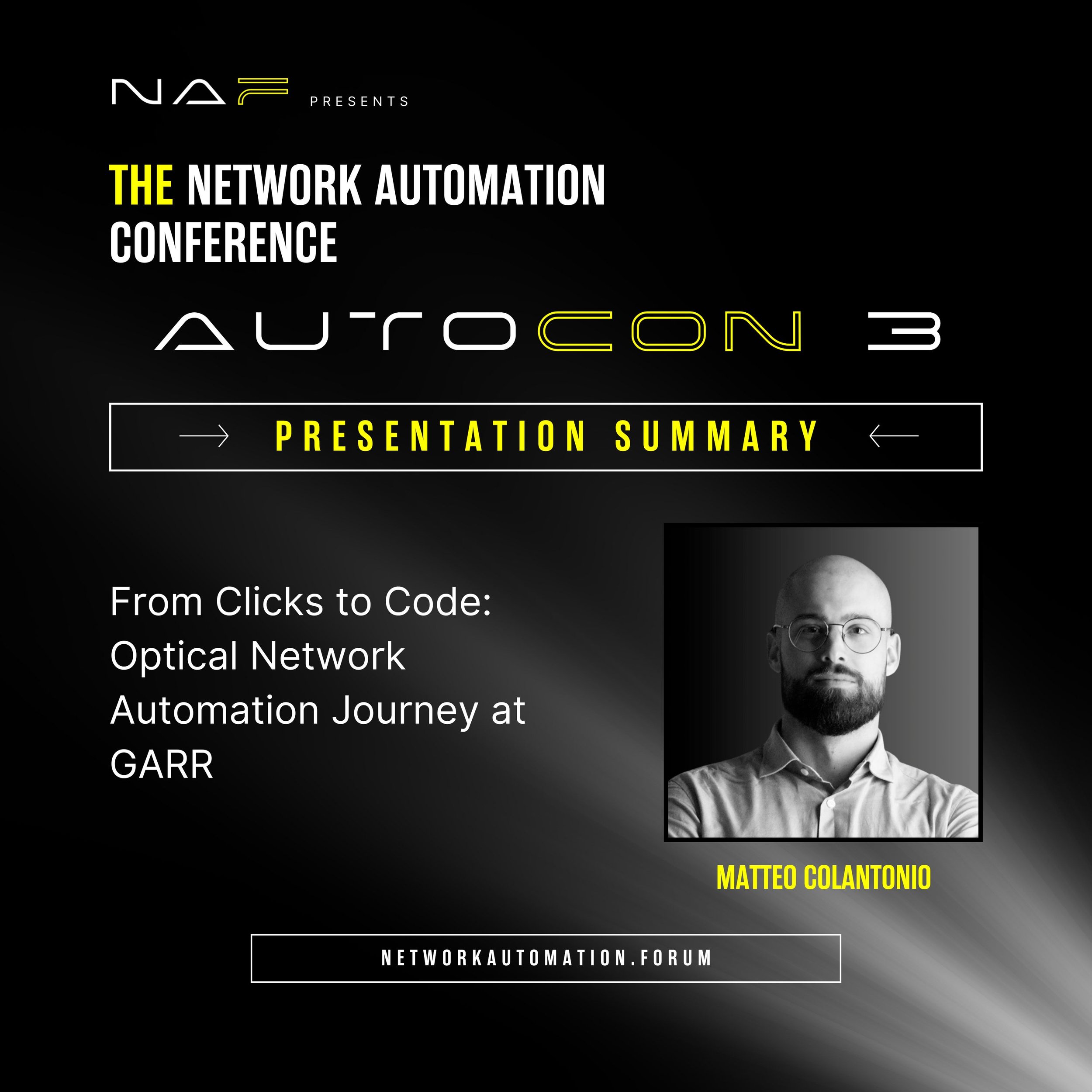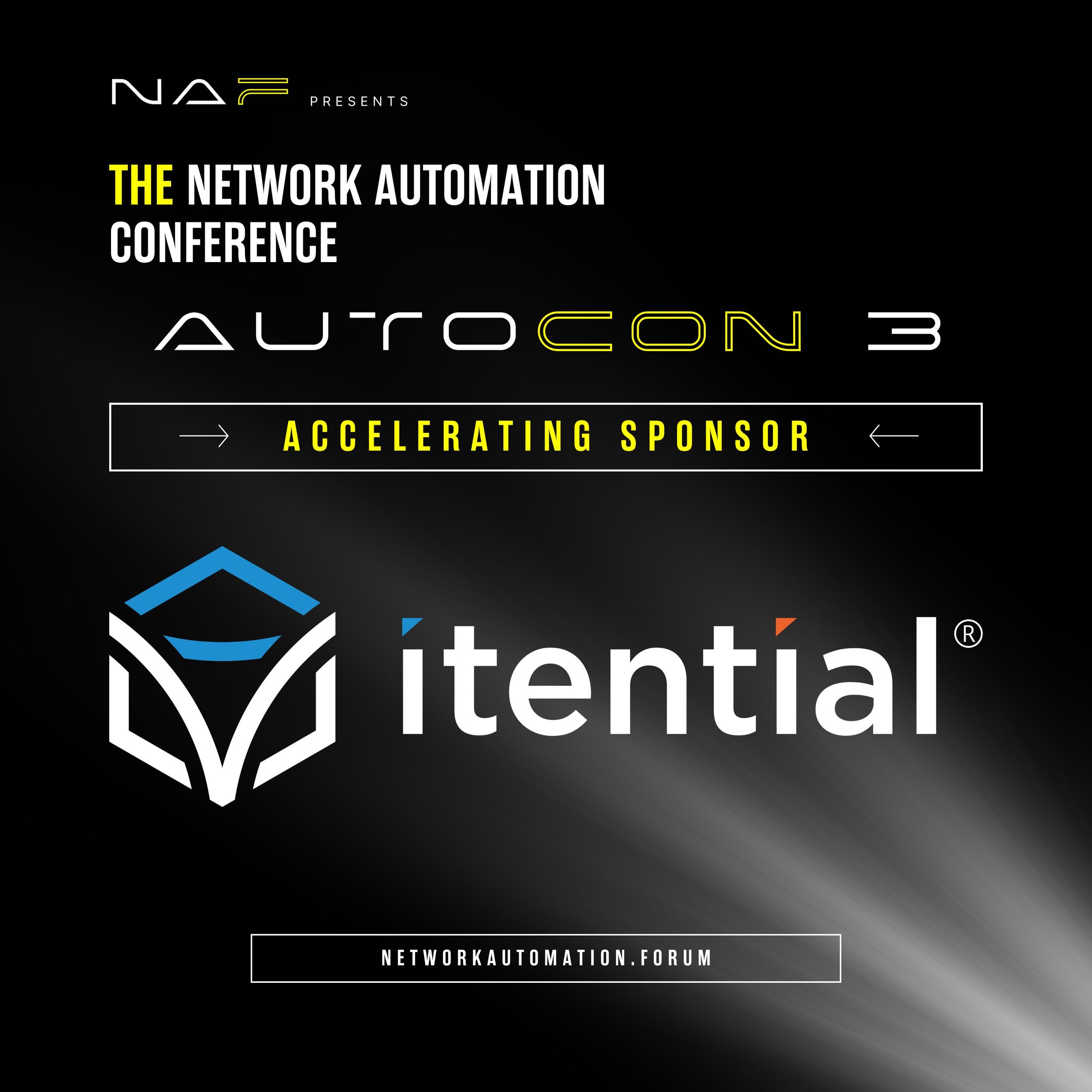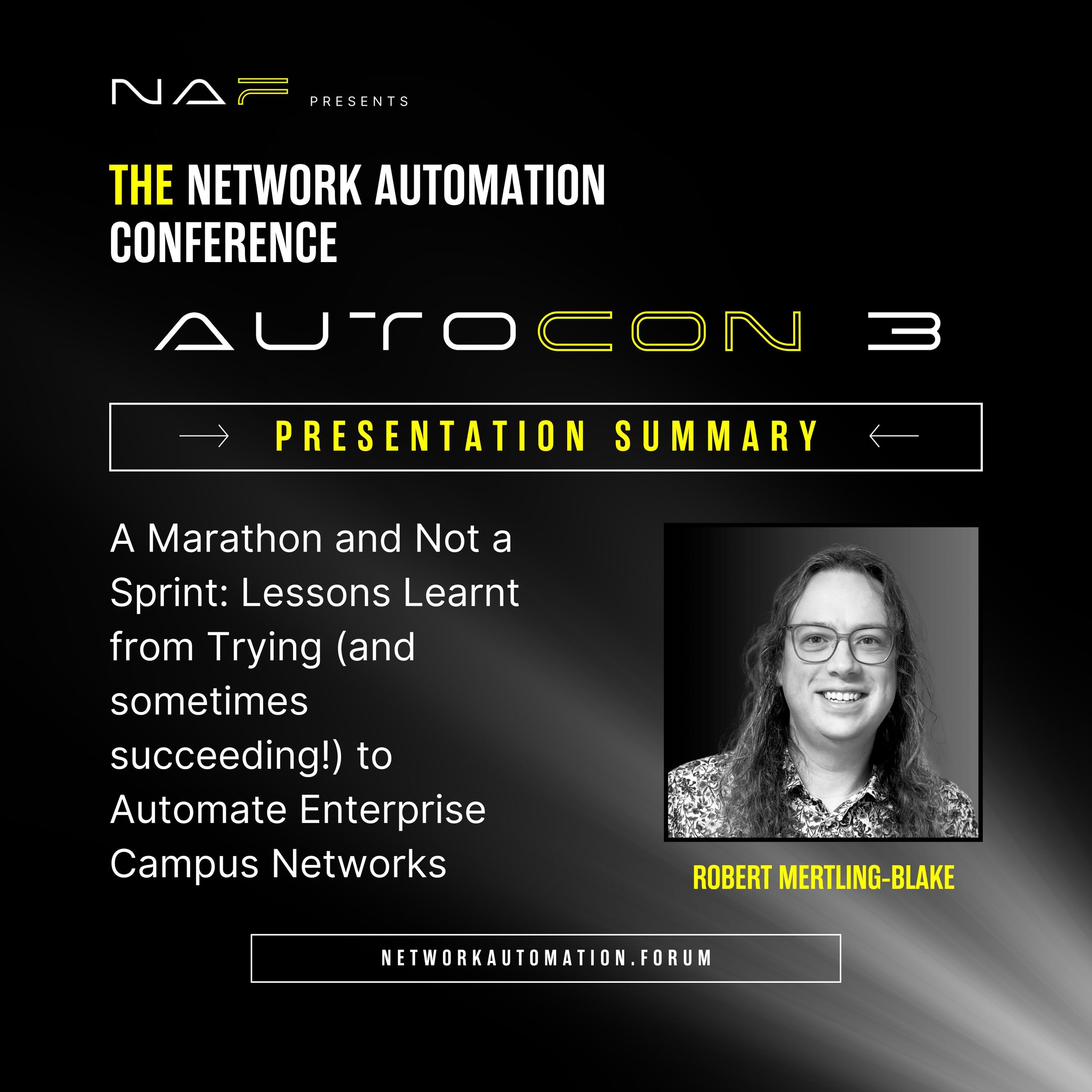
The Security Side Effect: How Network Automation Accidentally Transformed Our Risk Posture
Harper's story illustrates how network automation can become a powerful security tool even when that wasn't the original intent. The lesson? Sometimes the best security improvements come not from security-focused projects, but from operational excellence initiatives that inherently improve risk posture.

The Network Automation Epic: Terraform's Journey from Cloud to Campus
For organizations considering Terraform for network automation, Pozo's epic provides a realistic roadmap: expect challenges, plan for scale, build teams, and focus on the indirect business value that makes the journey worthwhile. Sometimes the hardest journeys yield the most valuable destinations.

Beyond the Island of Automation: Bridging Complex Networks with Purpose-Built Platforms
Gluware's presentation reflects a maturing understanding of enterprise automation challenges. Rather than promoting tool replacement, they're advocating for integration and enhancement of existing automation investments.

Beyond Scripts: How Temporal Transforms Complex Network Workflows
What makes Temporal compelling for network automation isn't just technical capabilities—it's the recognition that complex network operations are inherently distributed systems problems.

From 50 Clicks to 50 Seconds: Automating Optical Networks Beyond Traditional Tools
This presentation demonstrates that automation doesn't have to conform to popular tool limitations. When requirements exceed tool capabilities, the solution isn't necessarily to reduce requirements—it might be to find better tools.

The AI Revolution We Didn't See Coming: Why Network Automation Is About to Change Forever
Sprygada believes organizations that embrace AI-native network operations will see "significant increases in their ability to be agile, responsive, and build scalable infrastructure." This isn't just about efficiency gains—it's about capabilities that become possible only when AI is deeply integrated into operational frameworks. Think of it as the difference between using calculators to do math faster versus using computers to solve problems that were previously impossible.

The Art of Network Surgery: Migrating 7,000 Services Without Breaking Anything
What makes Luke's presentation valuable is its honesty about operational automation at scale. This isn't automation for efficiency gains—it's automation as the only viable way to manage a network of this size and complexity.

Stop Trying to Grow Unicorns: Why Network Automation Needs Software Developers
What makes their approach compelling isn't just the technical architecture—it's the honest acknowledgment that network automation is software development. Instead of pretending otherwise or trying to transform domain experts into something they're not, they embraced specialization.

The Long Game: Why Enterprise Campus Automation is a Marathon, Not a Sprint
Blake's presentation was valuable precisely because it wasn't a victory lap. It was an honest account of automation in the messy real world. His message for others starting similar journeys? "Take a try, have a play, see how it goes."

The Fresh Eyes We Need: What Network Automation Looks Like to a Beginner
Cinar's perspective is valuable precisely because it's unpolished by years of industry experience. He sees barriers that veterans have forgotten exist, struggles with tools that experts take for granted, and asks questions that reveal assumptions we didn't know we were making.

From Scripts to Microservices: The Evolution of Enterprise Network Automation
What makes this presentation valuable isn't just the technical architecture—it's the honest portrayal of evolution. Most organizations won't jump directly from Ansible playbooks to microservices. They'll follow a similar progression: scripts → centralized automation → orchestration → microservices.
